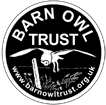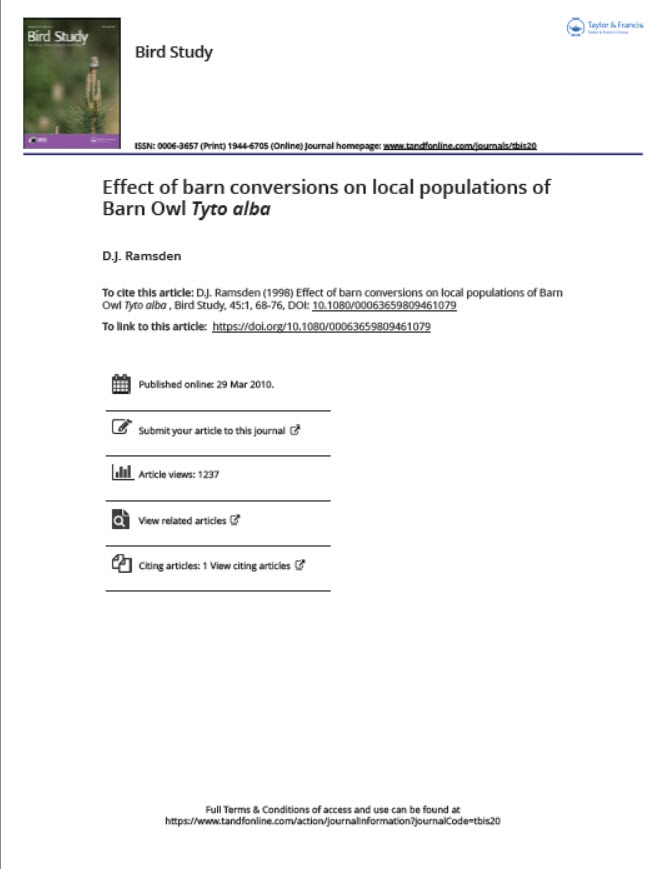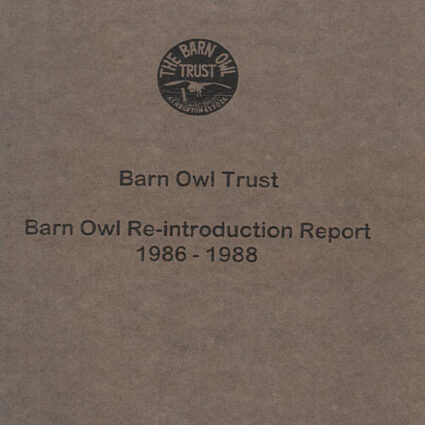“In southwest England most Barn Owls nest and roost in old barns and the practice of converting these into dwellings is well known. Sites containing
Barn Owls which were due for conversion were selected to determine the effect of such developments on local distribution and status. Twenty study areas of 1.5 km radius were studied for an average of 40 months. Within each study area every potential roosting or nesting site was searched every four months. The occupation of sites by Barn Owls, habitat quality and rodenticide use were recorded. Within some study areas the central (occupied) site remained unchanged. Within others it was lost through conversion or demolition. The loss of a single occupied site was shown to have a marked effect upon the resident birds which generally abandoned not only the lost site but also other nearby sites. It is concluded that the loss of one occupied site can have a disproportionally large negative effect even in areas where numerous alternative sites exist.”
DAVID J. RAMSDEN
Barn Owl Trust, Waterleat, Ashburton, Devon, TQ13 7HU




